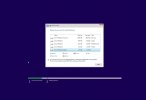I already said it's only needed for 'clean all' or some other unusual task.No, it's not if the intention is to pass a machine on from its original owner to someone else.
Which was in response to "I use it all the time when clean reinstalling to use diskpart to clean the drive on to which Windows is about to be installed" with no mention of secure erase for changing owners. I didn't think that would be something you're doing all the time.
I was clarifying for others in case they thought there was some benefit in using diskpart for ordinary Windows reinstalls.
And my post was about SF10/diskpart not being necessary for ordinary Windows reinstalls, surely you don't use diskpart for the most common situation of reinstalling for the same owner?If you read the material I posted, I propose using just "clean" if the machine is being kept by its original owner.
I'm not sure why you feel the need to explain that files can easily be recovered if 'clean all' or some other secure erase procedure isn't used. I already mentioned that SF10/diskpart can be used to 'clean all'.

